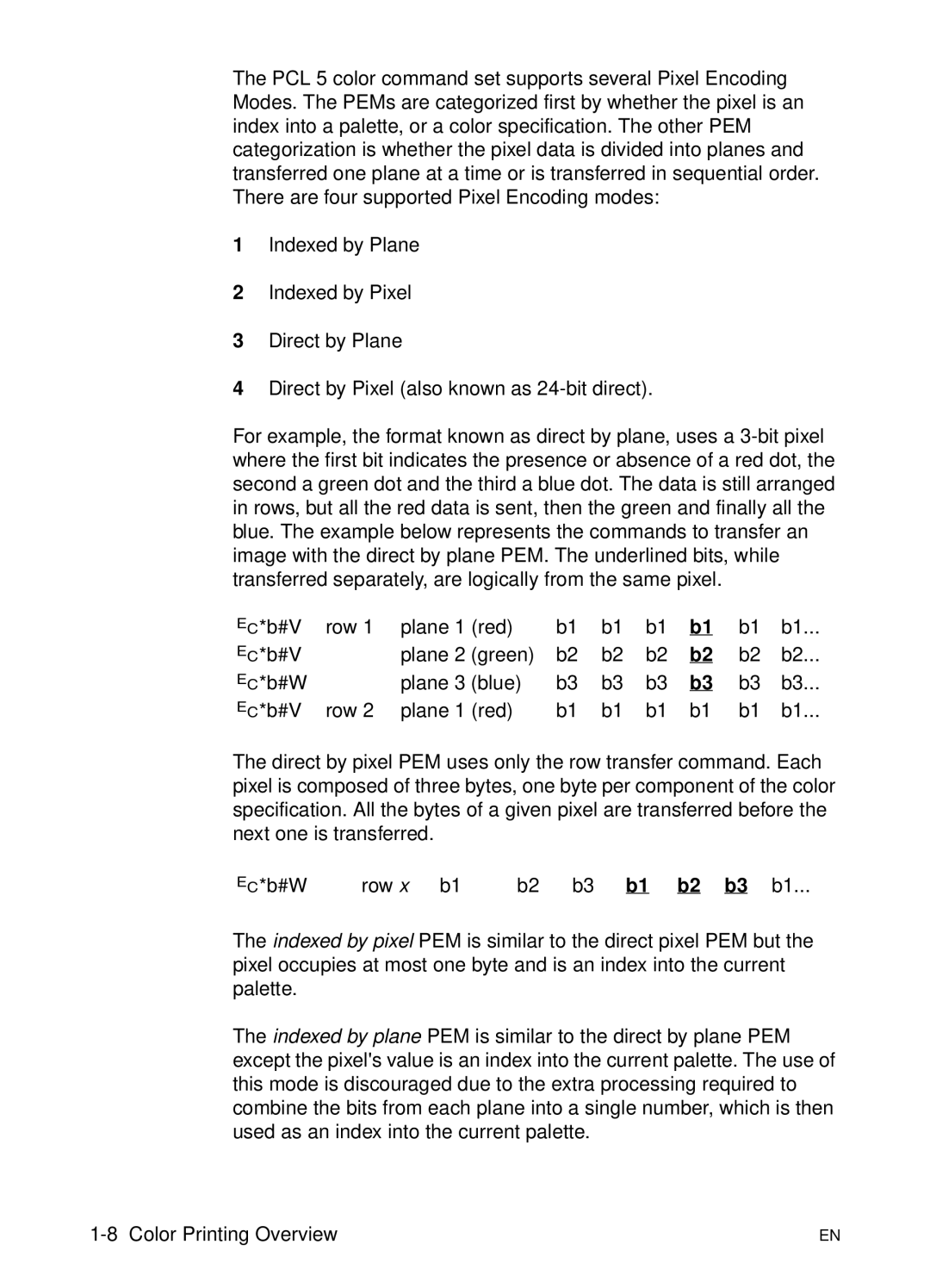The PCL 5 color command set supports several Pixel Encoding Modes. The PEMs are categorized first by whether the pixel is an index into a palette, or a color specification. The other PEM categorization is whether the pixel data is divided into planes and transferred one plane at a time or is transferred in sequential order. There are four supported Pixel Encoding modes:
1Indexed by Plane
2Indexed by Pixel
3Direct by Plane
4Direct by Pixel (also known as
For example, the format known as direct by plane, uses a
?*b#V | row 1 | plane 1 | (red) | b1 | b1 | b1 | b1 | b1 | b1... |
?*b#V |
| plane 2 | (green) | b2 | b2 | b2 | b2 | b2 | b2... |
?*b#W |
| plane 3 | (blue) | b3 | b3 | b3 | b3 | b3 | b3... |
?*b#V | row 2 | plane 1 | (red) | b1 | b1 | b1 | b1 | b1 | b1... |
The direct by pixel PEM uses only the row transfer command. Each pixel is composed of three bytes, one byte per component of the color specification. All the bytes of a given pixel are transferred before the next one is transferred.
?*b#W | row x b1 | b2 b3 b1 b2 b3 b1... |
The indexed by pixel PEM is similar to the direct pixel PEM but the pixel occupies at most one byte and is an index into the current palette.
The indexed by plane PEM is similar to the direct by plane PEM except the pixel's value is an index into the current palette. The use of this mode is discouraged due to the extra processing required to combine the bits from each plane into a single number, which is then used as an index into the current palette.
EN |
